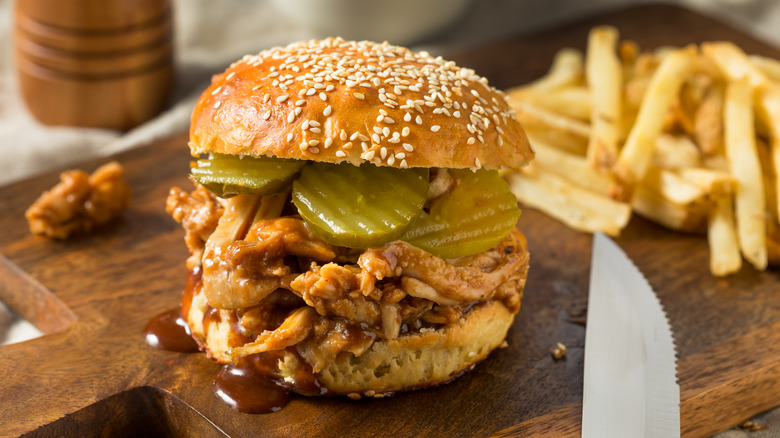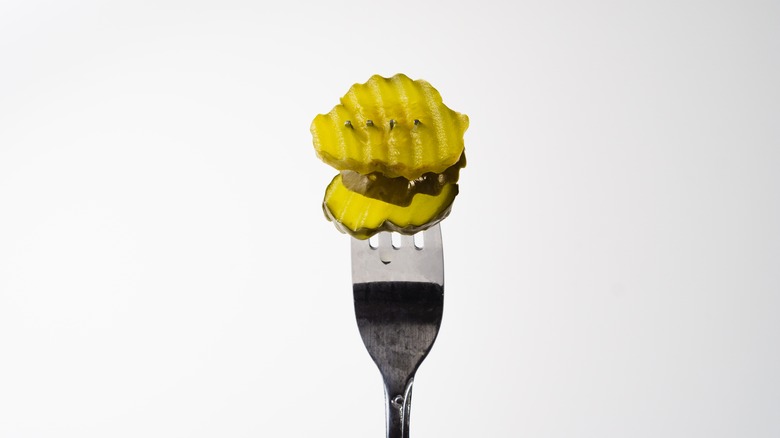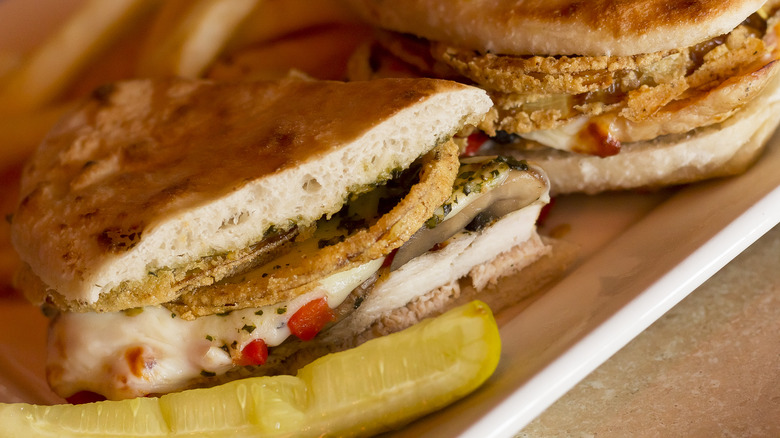Why Do Sandwich Pickles Have Ridges?
Sandwich pickles, whether they're of the bread and butter variety or sweet, provide the perfect pop of acidity and textural contrast, but you might find yourself wondering why the kind that go in between your sandwich layers often have ridges. Although there is no centralized authority on pickles, many people posit that the reason behind the design choice is more than just aesthetic.
Ridges and grooves serve an important purpose when it comes to pasta (the texture helps your mac and cheese taste even saucier because it provides more surface area for the sauce to adhere to) and potato chips (ridges are scientifically proven to hold up better against the weight of a creamy dip), and, as it turns out, pickles are no different. According to pickle fans, the ridges in the pickle slices help them stay put on the sandwich amidst the pieces of meat, slippery slices of tomato or wet lettuce, and oily condiments.
Other pluses of pickle ridges
Another theory is that the crinkles in sandwich pickles create a nice crunch that adds depth to your sandwich texture. The other components of a sandwich, like bread, meat, and cheese, generally have a softer texture, so a ridged pickle provides a welcome juxtaposition.
Structurally, the ridges also help the pickle maintain its shape by providing strength and extra surface area. This design helps the pickle stay intact and you avoid that mushy center that you often find with flat pickles.
At the end of the day, with no pickle judge to call the shots, serving sandwiches with pickles that have ridges could simply be one of those things that was long done by food companies, accepted by the masses, and now would be missed if the habit were to disappear. Or it could be an aesthetic thing. After all, the sandwich pickles with ridges do look pretty fancy.
Why do we serve pickles with sandwiches anyway?
Whether it's pickle chips topping your burger or a spear alongside your lunch, the tradition of serving pickles with sandwiches has a long history. Pickles themselves were considered a delicacy and, surprisingly enough, a beauty aid in the times of Cleopatra as early as 2400 B.C. But the credit for the pickle's place alongside the sandwich goes to Jewish immigrants who settled in New York City from Europe in the 1800s.
They opened delis and restaurants and began offering pickles as a palate cleanser of sorts. Pickles, with their briny, sour, and salty taste, are the perfect chaser to cut through the richness of fatty meats and cheeses that come in sandwiches (indeed, pickle juice is a great chaser for all sorts of tastes). The practice quickly caught on beyond just Jewish delis and was adopted all over the country from delis to fast food restaurants to diners.


